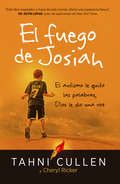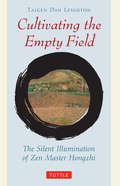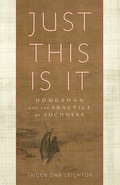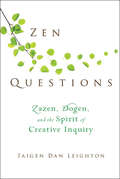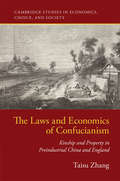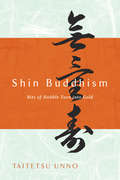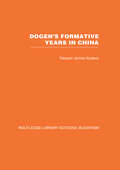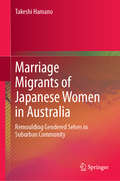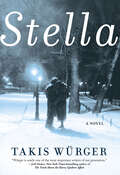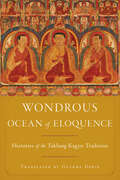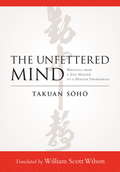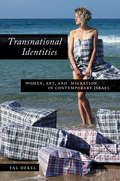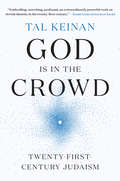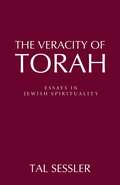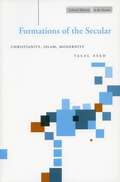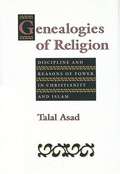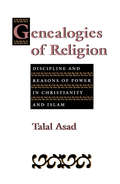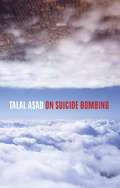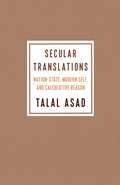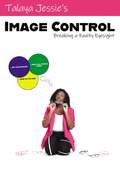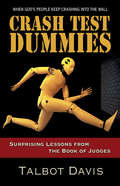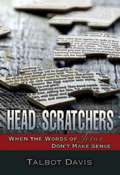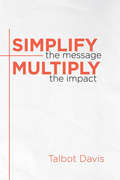- Table View
- List View
El fuego de Josiah / The Josiah's Fire: El autismo le quitó las palabras, Dios le dio una voz
by Tahni Cullen¿Dónde queda la fe cuando no hay esperanza Apenas estrenándose como padres, Joe y Tahni Cullen tuvieron un inesperado encuentro con el mundo del autismo cuando su hijo Josiah perdió repentinamente su capacidad de hablar, jugar y socializar. El diagnóstico: Trastorno del espectro autista. En sus intentos de ver a Josiah recuperarse y recuperar el habla, los Cullen sufrieron luchas físicas, emocionales y financieras. Mientras que otros niños alrededor de él mejoraban, Josiah solo empeoraba. Cinco años más tarde, Josiah, a quien no se le había enseñado formalmente a leer o escribir, de repente comenzó a escribir en su iPad profundos pensamientos sobre Dios, ciencia, historia, negocios, música, personas desconocidas, y el cielo. Las reveladoras visiones de Josiah, sus encuentros celestiales y sus experiencias sobrenaturales forzaron a su familia a salir del anonimato y a desafiar la teología predecible, catapultándolos a un maravilloso encuentro con Jesús.Encuentre esperanza en medio de las dificultadesTenga una novedosa vislumbre del cieloAprenda a escuchar y a confiar en la voz de DiosIdentifique los papeles del Padre, del Hijo, y del Espíritu SantoEntérese de la obra de los ángeles, ¡y más!Sígale el rastro a la verdad en el misterioso mundo de Josiah, ¡y descubra por qué su familia y amigos no pudieron permanecer más en silencio!
Cultivating the Empty Field
by Yi Wu Taigen Dan LeightonFirst to articulate the meditation method known to contemporary Zen practitioners as shikantaza ("just sitting") Chinese Zen master Hongzhi is one of the most influential poets in all of Zen literature. This translation of Hongzhi's poetry, the only such volume available in English, treats readers to his profound wisdom and beautiful literary gift. In addition to dozens of Hongshi's religious poems, translator Daniel Leighton offers an extended introduction, placing the master's work in its historical context , as well as lineage charts and other information about the Chinese influence on Japanese Soto Zen.
Just This Is It: Dongshan and the Practice of Suchness
by Taigen Dan LeightonThe joy of "suchness"--the absolute and true nature inherent in all appearance--shines through the teachings attributed to Dongshan Liangjie (807-869), the legendary founder of the Caodong lineage of Chan Buddhism (the predecessor of S?t? Zen). Taigen Dan Leighton looks at the teachings attributed to Dongshan--in his Recorded Sayings and in the numerous koans in which he is featured as a character--to reveal the subtlety and depth of the teaching on the nature of reality that Dongshan expresses. Included are an analysis of the well-known teaching poem "Jewel Mirror Samadhi" and of the understanding of particular and universal expressed in the teaching of the Five Degrees. "The teachings embedded in the stories about Dongshan provide a rich legacy that has been sustained in practice traditions," says Taigen. "Dongshan's subtle teachings about engagement with suchness remain vital today for Zen people and are available for all those who wish to find meaning amid the challenges to modern life."
Zen Questions
by Taigen Dan LeightonWhether speaking of student or master, Zen hinges on the question. Zen practice does not necessarily focus on the answers, but on finding a space in which we may sustain uncertainty and remain present and upright in the middle of investigations. Zen Questions begins by exploring "The World of Zazen,"--the foundational practice of the Zen school--presenting it as an attitude of sustained inquiry that offers us an entryway into true repose and joy. From there, Leighton draws deeply on his own experience as a Zen scholar and teacher to invite us into the creativity of Zen awareness and practice. He explores the poetic mind of Dogen with the poetry of Rumi, Mary Oliver, Gary Snyder, and even "the American Dharma Bard" Bob Dylan. What's more, Leighton uncovers surprising resonances between the writings of America's Founding Fathers--including Thomas Jefferson and Ben Franklin--and the liberating ideals at the heart of Zen.
Cambridge Studies in Economics, Choice, and Society: Kinship and Property in Preindustrial China and England (Cambridge Studies in Economics, Choice, and Society)
by Taisu ZhangTying together cultural history, legal history, and institutional economics, The Laws and Economics of Confucianism: Kinship and Property in Pre-Industrial China and England offers a novel argument as to why Chinese and English pre-industrial economic development went down different paths. The dominance of Neo-Confucian social hierarchies in Late Imperial and Republican China, under which advanced age and generational seniority were the primary determinants of sociopolitical status, allowed many poor but senior individuals to possess status and political authority highly disproportionate to their wealth. In comparison, landed wealth was a fairly strict prerequisite for high status and authority in the far more 'individualist' society of early modern England, essentially excluding low-income individuals from secular positions of prestige and leadership. Zhang argues that this social difference had major consequences for property institutions and agricultural production.
Shin Buddhism
by Taitetsu UnnoInterest in Buddhism continues to grow throughout North America, and more and more readers are moving beyond the familiar Zen and Tibetan traditions to examine other types of Buddhism. In Shin Buddhism, Taitetsu Unno explains the philosophy anc practices of "Pure Land" Buddhism, which dates back to the sixth century C.E., when Buddhism was first introduced in Japan.While Zen Buddhism flourished in remote monasteries, the Pure Land tradition was adopted by the common people. With a combination of spiritual insight and unparalled scholoarship, the author describes the literature, history, and principles of this form of Buddhism and illuminates the ways in which it embodies this religion's most basic tenet: "No human life should be wasted, abandoned, or forgotten but should be transformed into a source of vibrant life, deep wisdom, and compassionate living." As a practice that evolved to harmonize with the realities of everyday life, Shin Buddhism will be particularly attractive to contemporary Western readers.From the Trade Paperback edition.
Dogen's Formative Years: An Historical and Annotated Translation of the Hokyo-ki (Routledge Library Editions: Buddhism)
by Takashi James KoderaOriginally published in 1980. Dogen was the founder of the Soto School of Zen and one of the most influential thinkers in the history of Japanese Buddhism. When originally published, this historical and textual study was the first to examine in detail the line of continuity between Dogen and his Chinese predecessors, through his Chinese master, Ju-ching.
Marriage Migrants of Japanese Women in Australia: Remoulding Gendered Selves in Suburban Community
by Takeshi HamanoThis book investigates the experience of Japanese women who have immigrated to Australia through marriage to a local partner. Based on long-term participant observations gathered with a Japanese ethnic association in Sydney, and on in-depth interviews with the association’s members, it examines the ways in which the women remould themselves in Australia by constructing gendered selves that reflect their unique migratory circumstances through cross-border marriage.In turn, the book argues that the women tend to embrace expressions of Japanese femininity that they once viewed negatively, and that this is due to their lack of social skills and access to the cultural capital of mainstream Australian society. Re-molding the self through conventional Japanese notions of gender ironically provides them with a convincing identity: that of minority migrant women. Nevertheless, by analyzing these women’s engagement with a Japanese ethnic association in a suburb of Sydney, the book also reveals a nuanced sense of ambivalence; a tension between the women’s Japanese community and their lives in Australia.Accordingly, the book provides a fresh perspective on interdisciplinary issues of gender and migration in a globalized world, and engages with a wide range of academic disciplines including: sociology of migration; sociology of culture; cultural anthropology; cultural studies; Japanese studies; Asian studies; gender studies; family studies; migration studies and qualitative methodologies.
Stella: A Novel
by Takis WürgerIn this “spare, effecting novel,” a playboy in WWII Berlin discovers that the bliss of romance cannot shield him from the horrors of war (Publishers Weekly).Friedrich, a wealthy but naïve young man, arrives in Berlin from Switzerland in 1942 with dreams of becoming an artist. He is hypnotized by Kristin, a beautiful artist’s model who teaches him how to navigate a bustling city filled with danger. Yet the horror of war feels far away as Friedrich and Kristin luxuriate in the Grand Hotel, where even Champagne and fresh fruit can be obtained thanks to the black market.But the mood in the city darkens as the Nazi Party begins to terrorize anyone who might be disloyal to the Reich. And when Friedrich discovers that Kristin is not everything she seems, she tells him an astonishing secret: that her real name is Stella, and that she is Jewish, passing for Aryan.As Friedrich confronts Stella’s unimaginable choices, he finds himself woefully unprepared for the history he is living through. Based in part on a real historical character, Stella sets a tortured love story against the backdrop of wartime Berlin.
Wondrous Ocean of Eloquence: Histories of the Taklung Kagyu Tradition
by Taklungpa Ngawang NamgyelA comprehensive history of the Taklung Kagyu lineage of Tibetan Buddhism, composed in the seventeenth century, and includes glossy color images of recently discovered twelfth-century portraits and inscriptions.This is the first ever English translation of a multilayered and comprehensive historiographical volume on the political, artistic, architectural, biographical, and mystical dimensions of the Taklung, one of four primary subsects of the Kagyu lineage of Tibetan Buddhism. The bulk of the volume is a translation of an early seventeenth-century Tibetan history by Taklung Ngawang Namgyel and includes supplements to that history written in the eighteenth, nineteenth, and twentieth centuries. Centering an otherwise marginal and understudied Buddhist tradition, this volume contains an extraordinary wealth of historical, religious, and biographical information not found in any other published work. It is a complex tale of Tibetan religiopolitical maneuvering in the face of centuries of civil unrest and armed conflict with Central Asian warring dynasties.While detailing the abbatial succession of the tradition&’s two main monastic seats, Taklung and Riwoche Monasteries, it is also broad and vast in scale, going back to sixth-century BCE India to include early Indian Buddhist canon formulation, moving then to narratives on the Tibetan Kagyu lineage holders (Marpa, Milarepa, Gampopa), to the twelfth-century founding of the Taklung sect in Tibet, and then all the way through to the early twentieth century, which saw Tibet&’s first modern military and cultural conflicts both within the country and with Chinese, Mongol, and Gorkha forces.An introductory essay by art historian Jane Casey on painting in the Taklung tradition includes her scholarly analysis of the dating and provenance of thirteenth-century portraits and inscriptions, only discovered in recent decades. Glossy color images of these paintings are included in the volume.Shambhala Publications gratefully acknowledges the generous support of Robert H. N. Ho and John Eskenazi in sponsoring the translation, and the Tsadra Foundation in sponsoring the preparation and printing of this book.
The Unfettered Mind: Writings from a Zen Master to a Master Swordsman
by William Scott Wilson Takuan SohoThis classic samurai-era text fused Japanese swordsmanship with Zen and influenced the direction that the art has taken ever since. Written by the seventeenth-century Zen master Takuan Soho (1573-1645), The Unfettered Mind is a book of advice on swordsmanship and the cultivation of right mind and intention. It was written as a guide for the samurai Yagyu Munenori, who was a great swordsman and rival to the legendary Miyamoto Musashi. Takuan was a giant in the history of Zen; he was also a gardener, calligrapher, poet, author, adviser to samurai and shoguns, and a pivotal figure in Zen painting. He was known for his brilliance and acerbic wit. In these succinct and pointed essays, Takuan is concerned primarily with understanding and refining the mind--both generally and when faced with conflict. The Unfettered Mind was a major influence on the classic manifestos on swordsmanship that came after it, including Miyamoto Musashi's Book of Five Rings and Yagyu Munenori's Life-Giving Sword.
Transnational Identities: Women, Art, and Migration in Contemporary Israel
by Tal DekelTranslated originally from Hebrew, Transnational Identities: Women, Art, and Migration in Contemporary Israel offers a critical discussion of women immigrants in Israel through an analysis of works by artists who immigrated to the country beginning in the 1990s. Though numerous aspects of the issue of women migrants have received intense academic scrutiny, no scholarly books to date have addressed the gender facets of the experiences of contemporary women immigrants in Israel. The book follows an up-to-date theoretical model, adopting critical tools from a wide range of fields and weaving them together through an in-depth qualitative study that includes the use of open interviews, critical theories, and analysis of artworks, offering a unique and compelling perspective from which to discuss this complex subject of citizenship and cultural belonging in an ethno-national state. It therefore stands to make a significant contribution to research into women's lives, citizenship studies, global migration, Jewish and national identity and women's art in contemporary Israel. The book is divided into sections, each of which aims a spotlight on women artists belonging to a distinct groups of immigrants—the former Soviet Union, Ethiopia, and the Philippines—and shows how their artwork reflects various conflicts regarding citizenship and identity-related processes, dynamics of inclusion-exclusion, and power relations that characterize their experiences. Transnational Identities promotes a more nuanced, complex understanding of diversity among women from various groups and even within a specific ethnic group, as well as considering the "common differences" between women from diversified life experiences. To lay the groundwork for an analysis of the themes that recur in their artworks, Tal Dekel briefly discusses the notions of global migration and transnationalism and then examines gender and several other identity-related categories, notably religion, race, and class. These categories underline the complex nexus of overlapping and sometimes contradictory affiliations and identities that characterize migrating subjects in an age of globalization. Transnational Identities integrates theories from various disciplines, including art history, citizenship studies and critical political theory, gender studies, cultural studies, and migration studies in an interdisciplinary manner that those teaching and studying in these fields will find relevant to their continued research.
God Is in the Crowd: Twenty-First-Century Judaism
by Tal KeinanA bold proposal for discovering relevance in Judaism and ensuring its survival, from a pioneering social activist, business leader, and fighter pilot in the Israeli Air Force.God Is in the Crowd is an original and provocative blueprint for Judaism in the twenty-first century. Presented through the lens of Tal Keinan's unusual personal story, it a sobering analysis of the threat to Jewish continuity. As the Jewish people has become concentrated in just two hubs--America and Israel--it has lost the subtle code of governance that endowed Judaism with dynamism and relevance in the age of Diaspora. This code, as Keinan explains, is derived from Francis Galton's "wisdom of crowds," in which a group's collective intelligence, memory, and even spirituality can be dramatically different from, and often stronger than, that of any individual member's. He argues that without this code, this ancient people--and the civilization that it spawned--will soon be extinct. Finally, Keinan puts forward a bold and original plan to rewrite the Jewish code, proposing a new model for Judaism and for community in general.Keinan was born to a secular Jewish family in Florida. His interest in Judaism was ignited by a Christian minister at his New England prep school and led him down the unlikely path to enlistment in the Israel Air Force. Using his own dramatic experiences as a backdrop, and applying lessons from his life as a business leader and social activist, Keinan takes the reader on a riveting adventure, weaving between past, present, and future, and fusing narrative with theory to demonstrate Judaism's value to humanity and chart its path into the future.
God Is in the Crowd: Twenty-First-Century Judaism
by Tal Keinan“Enthralling, searching, profound, an extraordinarily powerful work on Jewish identity in the twenty-first century.”—Rabbi Lord Jonathan SacksA bold proposal for discovering relevance in Judaism and ensuring its survival, from a pioneering social activist, business leader, and fighter pilot in the Israeli Air Force God Is in the Crowd is an original and provocative blueprint for Judaism in the twenty-first century. Presented through the lens of Tal Keinan’s unusual personal story, it a sobering analysis of the threat to Jewish continuity. As the Jewish people has become concentrated in just two hubs—America and Israel—it has lost the subtle code of governance that endowed Judaism with dynamism and relevance in the age of Diaspora. This code, as Keinan explains, is derived from Francis Galton’s “wisdom of crowds,” in which a group’s collective intelligence, memory, and even spirituality can be dramatically different from, and often stronger than, that of any individual member’s. He argues that without this code, this ancient people—and the civilization that it spawned—will soon be extinct. Finally, Keinan puts forward a bold and original plan to rewrite the Jewish code, proposing a new model for Judaism and for community in general. Keinan was born to a secular Jewish family in Florida. His interest in Judaism was ignited by a Christian minister at his New England prep school and led him down the unlikely path to enlistment in the Israel Air Force. Using his own dramatic experiences as a backdrop, and applying lessons from his life as a business leader and social activist, Keinan takes the reader on a riveting adventure, weaving between past, present, and future, and fusing narrative with theory to demonstrate Judaism’s value to humanity and chart its path into the future.Advance praise for God Is in the Crowd“Beautifully written, brilliantly argued, this is a unique contribution to the conversation and a must read for anyone concerned with Tribal continuity.”—Yossi Klein Halevi, author of Letters to My Palestinian Neighbor“God Is in the Crowd blends social science, economics, religion, and national identity to help us see more clearly who we are as individuals, people, and a society.”—Dan Ariely, author of The Upside of Irrationality“American, Israeli, entrepreneur, fighter pilot, and investor: Keinan’s diagnosis of Israel and the Jewish Diaspora is provided through the lens of a rich and gripping life story. Keinan’s contribution is indispensable to the debate about the future of the Jewish people.”—Dan Senor, co-author of Start-up Nation
The Veracity of Torah: Essays in Jewish Spirituality
by Tal SesslerEight decades ago, the Jewish people underwent genocide in Europe. This apocalyptic event, was followed almost immediately by astonishing Jewish political and theological resurrection and renewal. This unique book ponders the tumultuous vicissitudes of th
Formations of the Secular
by Talal AsadOpening with the provocative query “what might an anthropology of the secular look like?” this book explores the concepts, practices, and political formations of secularism, with emphasis on the major historical shifts that have shaped secular sensibilities and attitudes in the modern West and the Middle East. Talal Asad proceeds to dismantle commonly held assumptions about the secular and the terrain it allegedly covers. He argues that while anthropologists have oriented themselves to the study of the “strangeness of the non-European world” and to what are seen as non-rational dimensions of social life (things like myth, taboo, and religion),the modern and the secular have not been adequately examined. The conclusion is that the secular cannot be viewed as a successor to religion, or be seen as on the side of the rational. It is a category with a multi-layered history, related to major premises of modernity, democracy, and the concept of human rights. This book will appeal to anthropologists, historians, religious studies scholars, as well as scholars working on modernity.
Genealogies of Religion: Discipline and Reasons of Power in Christianity and Islam
by Talal AsadIn Geneologies of Religion, Talal Asad explores how religion as a historical category emerged in the West and has come to be applied as a universal concept. The idea that religion has undergone a radical change since the Christian Reformation--from totalitarian and socially repressive to private and relatively benign--is a familiar part of the story of secularization. It is often invoked to explain and justify the liberal politics and world view of modernity. And it leads to the view that ""politicized religions"" threaten both reason and liberty. Asad's essays explore and question all these assumptions. He argues that ""religion"" is a construction of European modernity, a construction that authorizes--for Westerners and non-Westerners alike--particular forms of ""history making.
Genealogies of Religion: Discipline and Reasons of Power in Christianity and Islam
by Talal AsadIn Geneologies of Religion, Talal Asad explores how religion as a historical category emerged in the West and has come to be applied as a universal concept. The idea that religion has undergone a radical change since the Christian Reformation—from totalitarian and socially repressive to private and relatively benign—is a familiar part of the story of secularization. It is often invokved to explain and justify the liberal politics and world view of modernity. And it leads to the view that "politicized religions" threaten both reason and liberty. Asad's essays explore and question all these assumptions. He argues that "religion" is a construction of European modernity, a construction that authorizes—for Westerners and non-Westerners alike—particular forms of "history making."
On Suicide Bombing (The Wellek Library Lectures)
by Talal AsadLike many people in America and around the world, Talal Asad experienced the events of September 11, 2001, largely through the media and the emotional response of others. For many non-Muslims, "the suicide bomber" quickly became the icon of "an Islamic culture of death"-a conceptual leap that struck Asad as problematic. Is there a "religiously-motivated terrorism?" If so, how does it differ from other cruelties? What makes its motivation "religious"? Where does it stand in relation to other forms of collective violence? Drawing on his extensive scholarship in the study of secular and religious traditions as well as his understanding of social, political, and anthropological theory and research, Asad questions Western assumptions regarding death and killing. He scrutinizes the idea of a "clash of civilizations," the claim that "Islamic jihadism" is the essence of modern terror, and the arguments put forward by liberals to justify war in our time. He critically engages with a range of explanations of suicide terrorism, exploring many writers' preoccupation with the motives of perpetrators. In conclusion, Asad examines our emotional response to suicide (including suicide terrorism) and the horror it invokes. On Suicide Bombing is an original and provocative analysis critiquing the work of intellectuals from both the left and the right. Though fighting evil is an old concept, it has found new and disturbing expressions in our contemporary "war on terror. " For Asad, it is critical that we remain aware of the forces shaping the discourse surrounding this mode of violence, and by questioning our assumptions about morally good and morally evil ways of killing, he illuminates the fragile contradictions that are a part of our modern subjectivity.
On Suicide Bombing (The Wellek Library Lectures)
by Talal AsadLike many people in America and around the world, Talal Asad experienced the events of September 11, 2001, largely through the media and the emotional response of others. For many non-Muslims, "the suicide bomber" quickly became the icon of "an Islamic culture of death"-a conceptual leap that struck Asad as problematic. Is there a "religiously-motivated terrorism?" If so, how does it differ from other cruelties? What makes its motivation "religious"? Where does it stand in relation to other forms of collective violence?Drawing on his extensive scholarship in the study of secular and religious traditions as well as his understanding of social, political, and anthropological theory and research, Asad questions Western assumptions regarding death and killing. He scrutinizes the idea of a "clash of civilizations," the claim that "Islamic jihadism" is the essence of modern terror, and the arguments put forward by liberals to justify war in our time. He critically engages with a range of explanations of suicide terrorism, exploring many writers' preoccupation with the motives of perpetrators. In conclusion, Asad examines our emotional response to suicide (including suicide terrorism) and the horror it invokes.On Suicide Bombing is an original and provocative analysis critiquing the work of intellectuals from both the left and the right. Though fighting evil is an old concept, it has found new and disturbing expressions in our contemporary "war on terror." For Asad, it is critical that we remain aware of the forces shaping the discourse surrounding this mode of violence, and by questioning our assumptions about morally good and morally evil ways of killing, he illuminates the fragile contradictions that are a part of our modern subjectivity.
Secular Translations: Nation-State, Modern Self, and Calculative Reason (Ruth Benedict Book Series)
by Talal AsadIn Secular Translations, the anthropologist Talal Asad reflects on his lifelong engagement with secularism and its contradictions. He draws out the ambiguities in our concepts of the religious and the secular through a rich consideration of translatability and untranslatability, exploring the circuitous movements of ideas between histories and cultures.In search of meeting points between the language of Islam and the language of secular reason, Asad gives particular importance to the translations of religious ideas into nonreligious ones. He discusses the claim that liberal conceptions of equality represent earlier Christian ideas translated into secularism; explores the ways that the language and practice of religious ritual play an important but radically transformed role as they are translated into modern life; and considers the history of the idea of the self and its centrality to the project of the secular state. Secularism is not only an abstract principle that modern liberal democratic states espouse, he argues, but also a range of sensibilities. The shifting vocabularies associated with each of these sensibilities are fundamentally intertwined with different ways of life. In exploring these entanglements, Asad shows how translation opens the door for—or requires—the utter transformation of the translated. Drawing on a diverse set of thinkers ranging from al-Ghazālī to Walter Benjamin, Secular Translations points toward new possibilities for intercultural communication, seeking a language for our time beyond the language of the state.
Image Control: Breaking a Faulty Eyesight
by Talaya JessieWhat do you do when wisdom is calling you by your name? What do you do when purpose is yearning to be fulfilled in your spirit? What do you do when your mind can no longer grasp the anonymity of your destiny? Image Control takes you on a journey of discovering your perception. It helps you realize the factors in shaping your identity. The generation I am apart of is filled with so many creatives, but it seems as if we are afraid to pull out our maximum potential by the roots. It is almost as if we are waiting for people to see our value and validate why and what we were put on this earth to do. In a world where who you are and what you do matters the most, it is so easy to get consumed with the opinions of others. What if life was not necessarily about the things you accomplish? What if it was about how you accomplished those things? Was it with integrity or did you have to sacrifice a piece of yourself to be accepted? When you push past the boundaries and extremities of understanding your perception, you will then realize what was blocking your true self. You will begin to understand the why behind your actions. You will begin to understand the why to specific things your heart may desire. We all have dreams, misfortunes and pain. But what if we took back our treasure from the hands of others and the pit of our shortcomings? Will there be a possibility to sharpen our God given tools and gain understanding toward the use of those tools? Who would we actually become in the process? Will we continue to walk in facades? What if everyone in the world did the work to look deep within their soul? Would there be substance or lack? What if we took the blinders off? Would we only see the things that hurt us in life or the entirety of every situation we have had to encounter? The process of breaking a faulty eyesight is no easy one, but it leads you to an atmosphere that can no longer be controlled outside of you. The definitive question is will you do the work and be okay with looking a little funny while doing it?
Crash Test Dummies: Surprising Lessons from the Book of Judges
by Talbot DavisYou've seen them, haven't you? They ride in the front seats of expensive cars and drive headlong into a brick wall. And then they do it again. And again. They're crash test dummies. Why do they keep doing the same dumb thing over and over again? Or maybe a better question is, why do we? In this study on the Book of Judges, author Talbot Davis explore the stories of the judges from the perspective of the Israelites’ repeated failure to be faithful to God alone. Through his creative, quirky angle on the book, Davis highlights how the Israelites in Judges made the same mistake of apostasy over and over again. Each time God delivered them, they eventually fell back into the predictable, tragic pattern. As he explores each judge's story, Davis invites readers to consider the shape that patterns of sin take in our lives, and how God seeks to free us from them and empower us for faithful living. Readers will come to know the Book of Judges and its central characters more deeply, and they will come to appreciate this biblical book as a source of wisdom for living well. Discussion questions and a practical focus for each week will also accompany each chapter.
Head Scratchers: When the Words of Jesus Don't Make Sense
by Talbot DavisSometimes Jesus says things that make you scratch your head. Much of what Jesus has to say is uplifting or inspiring. But let’s face it: Sometimes Jesus says things that are confusing, perplexing, or even offensive. In Head Scratchers, Talbot Davis leads you to understand some of these difficult words. In each chapter, he examines a different statement or brief teaching from Jesus, using the provided biblical and other background to help illuminate the passage in question. Davis not only guides you to understand the passage, but shows you what it means to take it to heart and embrace a new way of life as a result. Starting with a passage we struggle with, Davis opens it to reveal a challenging, hopeful word that will bring the gospel’s transformative power into your life. Discussion questions at the end of each chapter are designed to help leaders of small groups. Also available when purchasing the book is access to a free video trailer and an audio recording of the author's sermons as another way to experience the weekly message.
Simplify the Message: Multiply the Impact
by Talbot DavisSimplify the Message: Multiply the Impact is designed to help preachers break through the noise of culture and the cauldron of church to deliver sermons with clarity, passion, and boldness. This book meets the needs of two cohorts in particular: 1) young preachers developing their skills who need structure, a process, and hope, and 2) more seasoned preachers who may have "settled" needing tools to invigorate their preparation and inspire their delivery. Paul told the Corinthians: "When I came to you, brothers and sisters, I didn’t come preaching God’s secrets to you like I was an expert in speech or wisdom. I had made up my mind not to think about anything while I was with you except Jesus Christ, and to preach him as crucified." (I Corinthians 2:1-2, CEB) Author Talbot Davis shares the insights and habits that will empower the reader’s preaching and teaching to be: Both creative and disciplined; Both carefully prepared and thoroughly spontaneous; and Both rooted in history and connected to modernity. Simple is the opposite of simplistic. Sermons with clear & unmistakable focus are best able to pulumb the depths not only of Gospel beauty but of the hearers’ lives.
